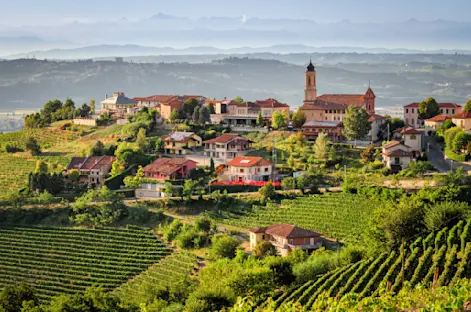Videos & Webinars
VIDEO | Experience Yellowstone & Grand Teton with Nat Hab
Find the wild pulse of Yellowstone and Grand Teton national parks on a sustainable, small-group safari. Witness wolves hunting in the Lamar Valley, moose and elk browsing beneath the Tetons, bison stirring up dust on open plains and geysers rising into the wide Western sky ringed with mountains.
VIDEO | The Big Bad Wolf: A Yellowstone Conservation Story
In 1995, more than a century after the gray wolf was eradicated from the Yellowstone region, it was reintroduced to America's first national park. As wolves began to thrive again in their native habitat, so, too, did controversy. Watch this short film to learn more about the conservation challenges faced by Yellowstone's wolves.
WEBINAR | Autumn in the Americas: The Science & Splendor of Fall
From the blazing maples of Maine to Alaska’s crimson tundra and Patagonia’s golden hills, autumn transforms the Americas into a living canvas. Expedition Leader Arthur Kampmann explains the science behind fall’s colorful foliage and how wildlife responds to the season’s cues. Learn what triggers bears to enter hyperphagia to prepare for winter, moose to begin their rut, and migratory birds to move south, and discover the best times and places to witness nature’s grand seasonal transformation, including on Nat Hab’s fall adventures.
WEBINAR | An American Tale: The Evolution of U.S. Wildlife Management
American wildlife management is the result of a unique mix of history, law and philosophy that continues to guide modern-day conservation. Join Expedition Leader Aaron Bott to learn about this system, from the early days of market hunting (the systemic killing of vast numbers of animals for profit) to the establishment of the Public Trust Doctrine. Discover how landmark legislation, civic engagement and influential leaders shaped the framework we use today and learn how this system continues to adapt to modern conservation challenges.
WEBINAR | Rethinking Wolves: Changing Our Perception of Predators
In honor of International Wolf Day, Expedition Leader Aaron Bott explores the biology and behavior of wolves, from close-knit family groups to how the species communicates, hunts and raises pups. Discover how 80 years of scientific research has reshaped our understanding of wolf behavior, moving beyond outdated notions of "alpha" wolves and toward a more accurate understanding of cooperation and complex social bonds. Learn how these new findings inform conservation and help shift public perception of one of Earth’s most misunderstood predators.

































